JULY 2024, N°1
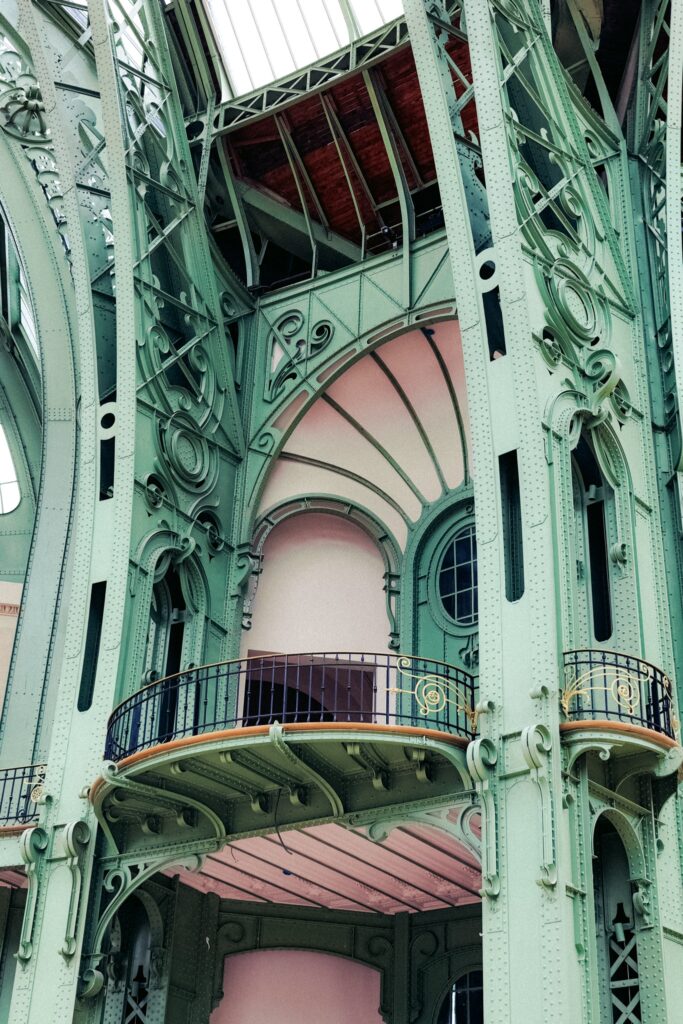
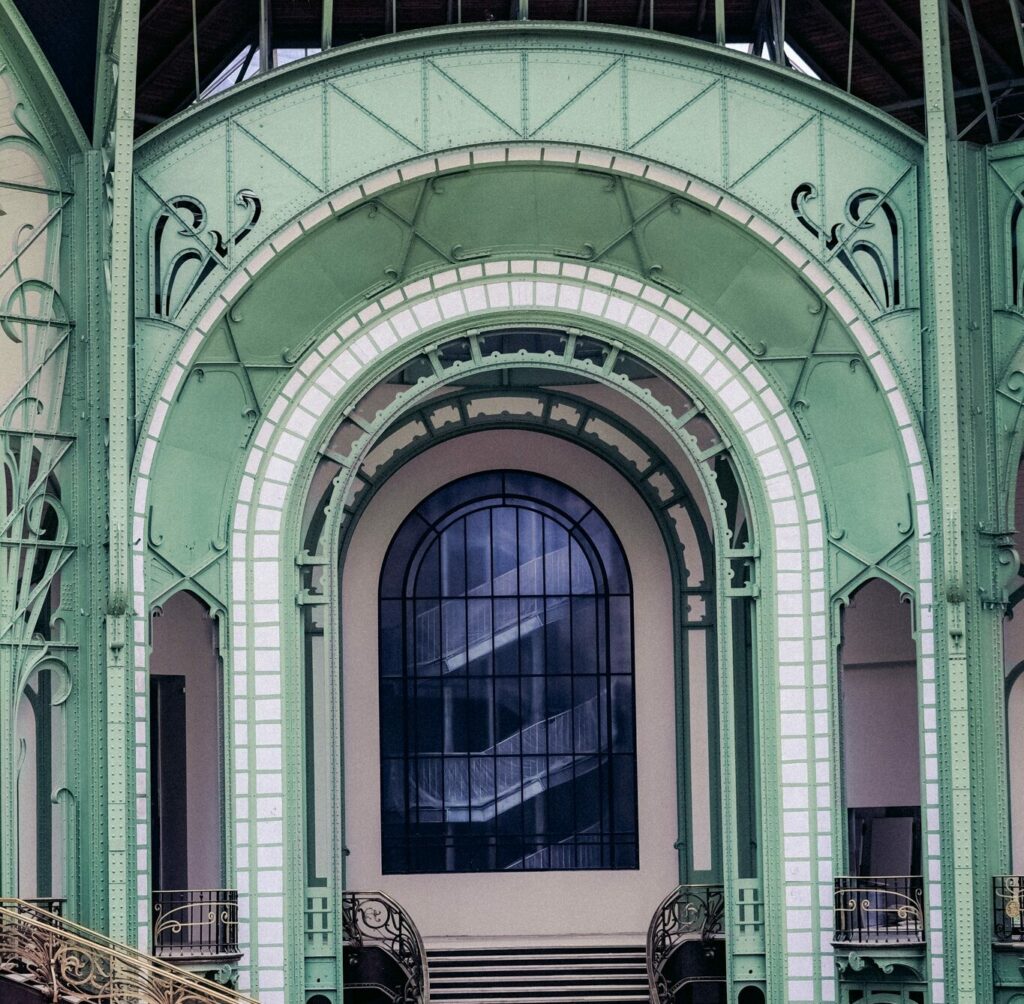
/ After 3 years of restoration work, the Grand Palais will host the fencing and taekwondo events under its 17,500 m2 of glass roofs.
THE EDITO
In a few days' time, bodies will be warming up in the stadiums, arms will be splashing in the pools and hands will be securing their grip with talcum powder. For more than a year now, other gestures, just as precise and choreographed, have been setting the pace in French craft workshops to produce the ceremonial outfits and accessories for the Games, thereby promoting France's heritage and know-how as well as the values of friendship, respect and excellence inherent in Olympism. The materials, heated, chiselled, hammered, sewn or dyed, become arm prostheses, Gavroche caps, torches or medals, reviving the folklore of this sporting event that honours the material as much as the body. It's a wonderful collection of gestures to be discovered at full speed, of course!
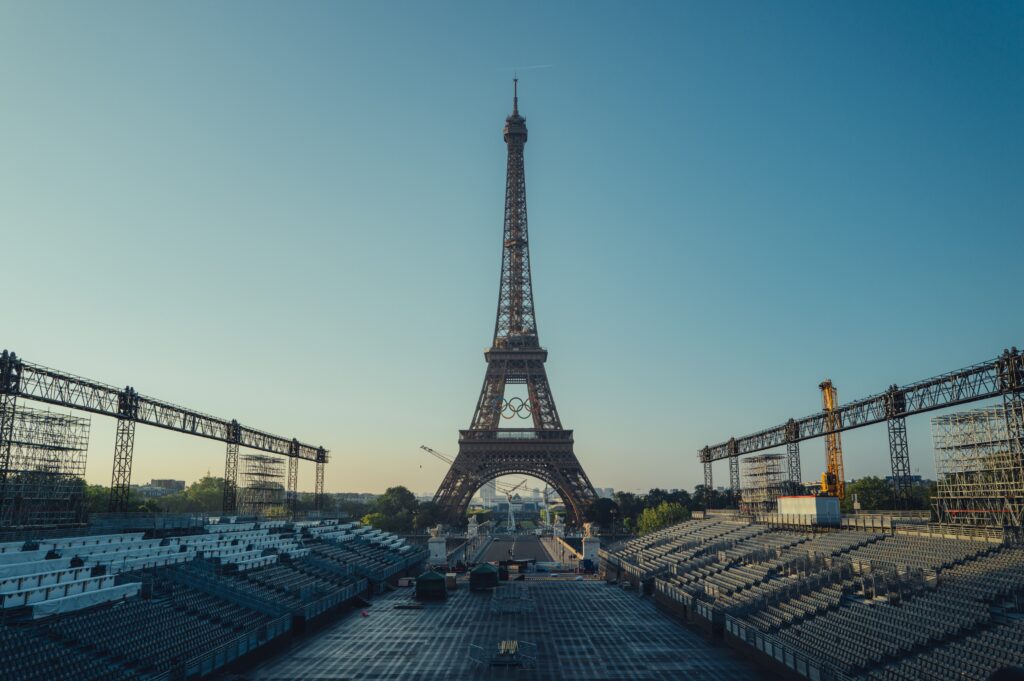
/ Just 50 days before the start of the Games, the future beach volleyball court takes its place at the foot of the Eiffel Tower.
PLAYING MATERIALS
THE PARIS WORKSHOPS TAKE TO THE GAMES
Until September the 27th, the Bureau du Design, de la Mode et des Métiers d'Art de la Ville de Paris is presenting the exhibition ‘Terrain de jeux, la création rencontre le sport’. While the shapes and colours of sport inspire craftspeople, their relationship with the body and movement confronts them with new challenges, like the prosthesis designed by Dimitry Hlinka for the athlete Arnaud Assoumani or the Break stool by Studio 5.5 designed for Roland-Garros. Mathilde Gullaud's cleverly devised scenography takes visitors on a fun, participatory journey from a basketball court to customisation and up-cycling workshops. Let's run!
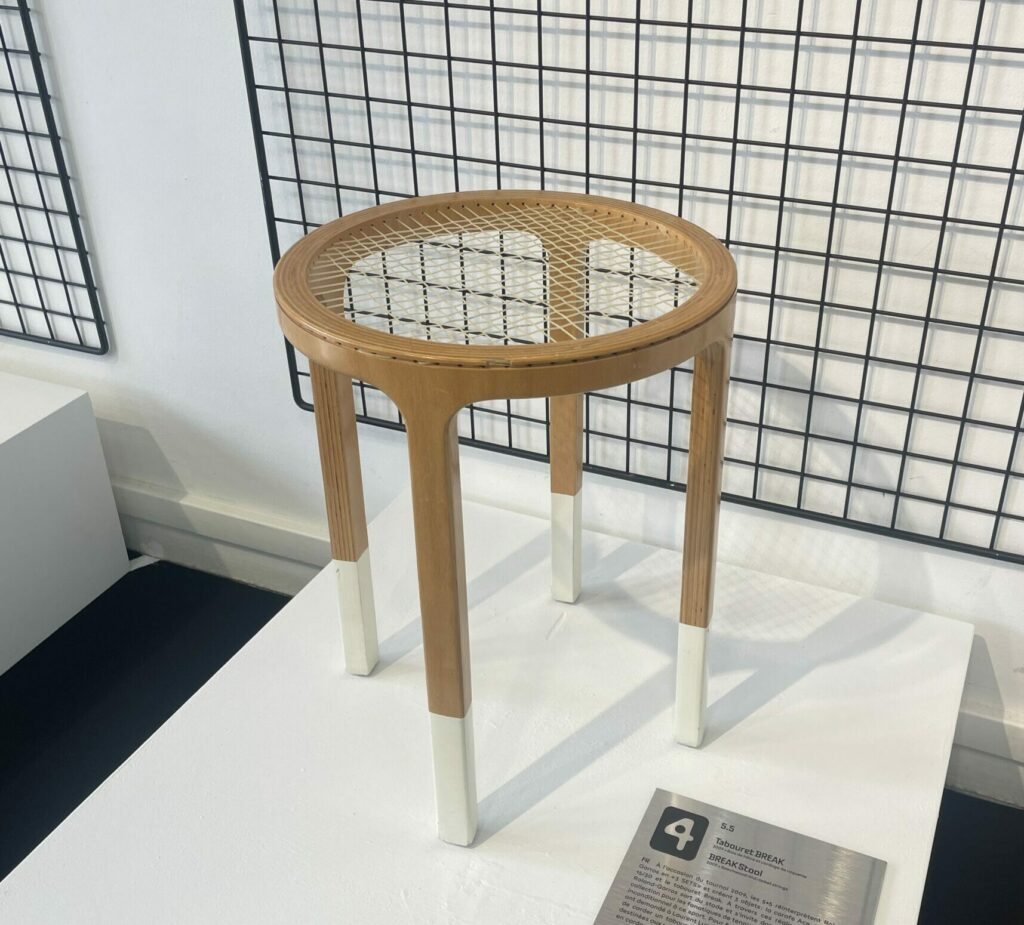
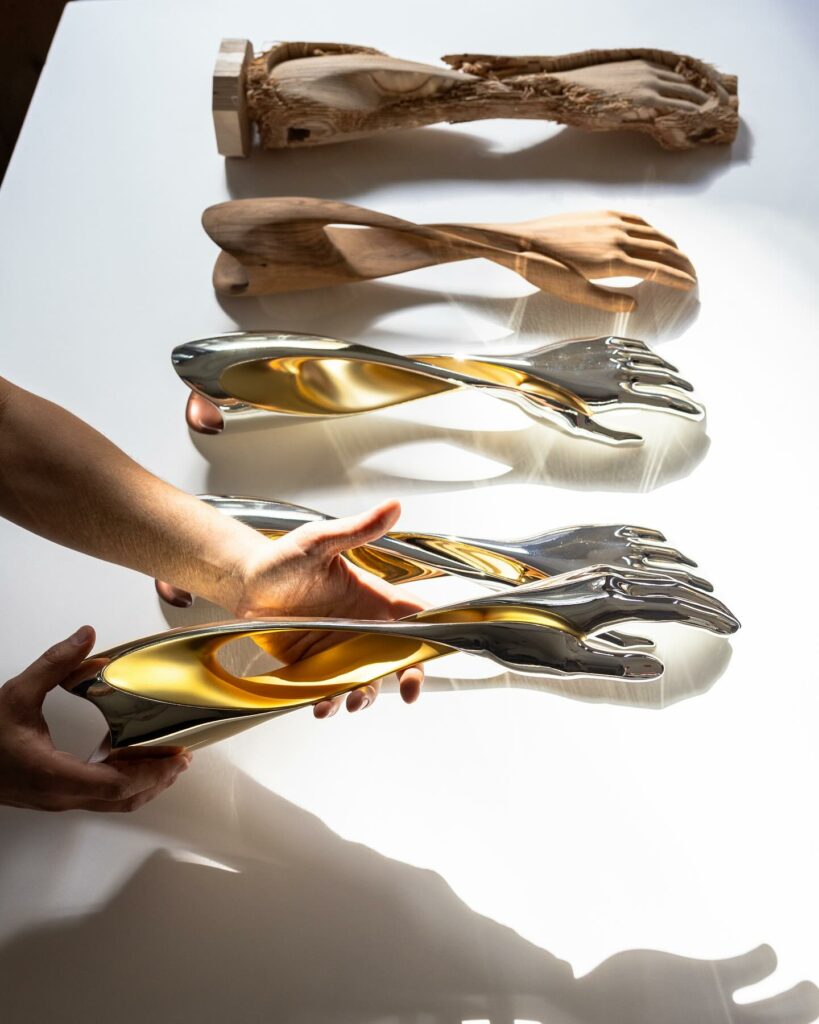
/ Break Studio 5.5 x Laurent Lucas stool, official stringer at Roland Garros, 2009. / Forearm prosthesis for Arnaud Assoumani, Dimitry Hlinka 2024. / Dundee, Arca. Wooden skateboard, 2023.
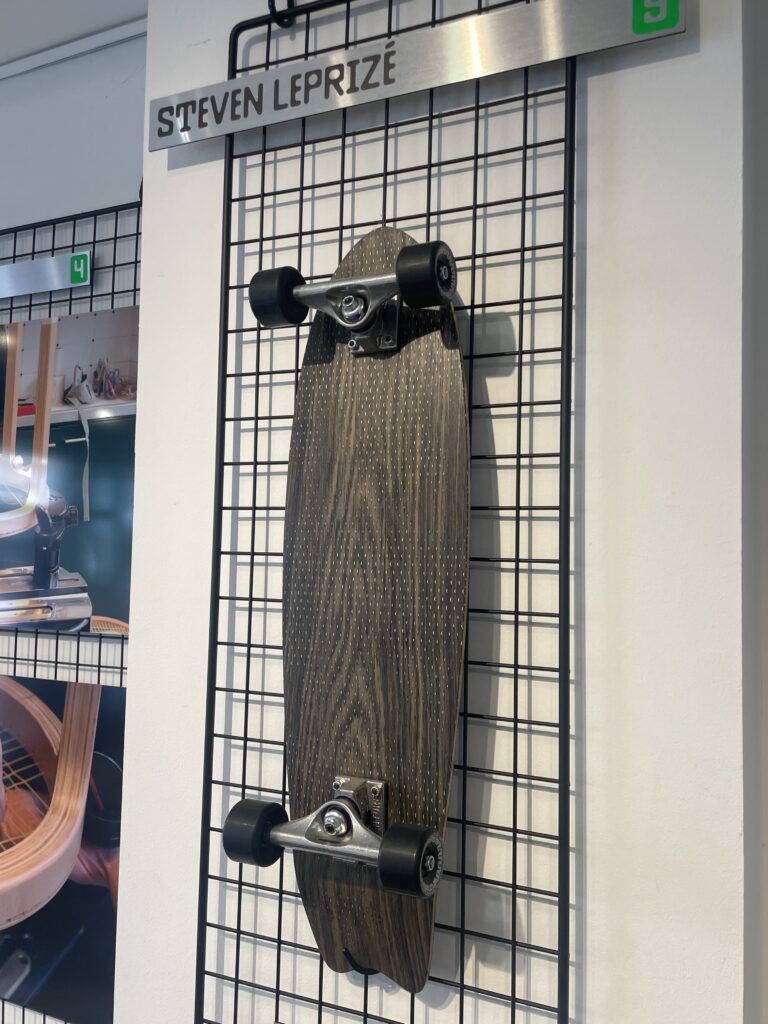
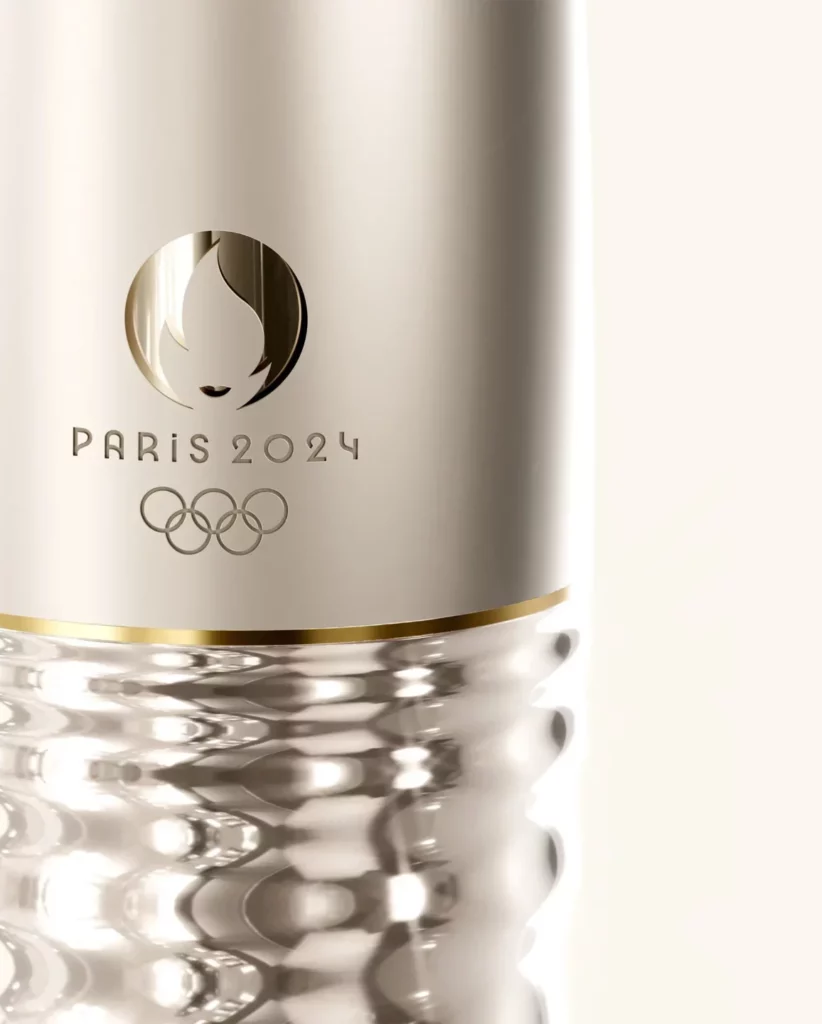
DESIGN IN OLYMPIC SHAPE
A year ago, French designer Mathieu Lehanneur took up the creative challenge of revisiting the great symbols of Olympism. The Olympic torch, with its perfect symmetry, rounded shapes and champagne hue, is the result of a blend of the 3 medal finishes, gold, silver and bronze. The cauldron, ready to ignite with each stage of the flame, is a jewel of purity and perfect circularity that required singular expertise. Its base is hydroformed, a nod to the motto of Paris, Fluctuat nec mergitur (‘It is battered by the waves, but does not sink’) and its ring has been pierced with 260 holes to allow it to blaze in a circle. A final symbol is apparently included in the designer's mission statement, but for the moment he is refusing to spill the beans. Just a little more patience.
THE GRAND SLAM OF EQUIPMENT FOR LVMH
As a prestigious sponsor of the Games, the French flagship of the world luxury goods industry has made a name for itself in the field of equipment, the fruit of a year's work by its craftsmen all over France. Chaumet designed and manufactured the medals for the future champions, a first in the world of fine jewellery. Berluti was responsible for making no fewer than 1,500 outfits in its French and Italian workshops, each with a unique patina, to dress the French Olympic and Paralympic teams for the opening ceremony. Finally, the ceremonial outfits for the awards ceremony were entrusted to Louis Vuitton. To produce the award winners' suits in an eco-responsible way, the brand collaborated with its start-up Weturn and the NOMADE association. The workshops in Asnières and Beaulieu-sur-Layon were not to be outdone, redoubling their inventiveness to create the trunks to house the torches and medals. Great work and a collective game!
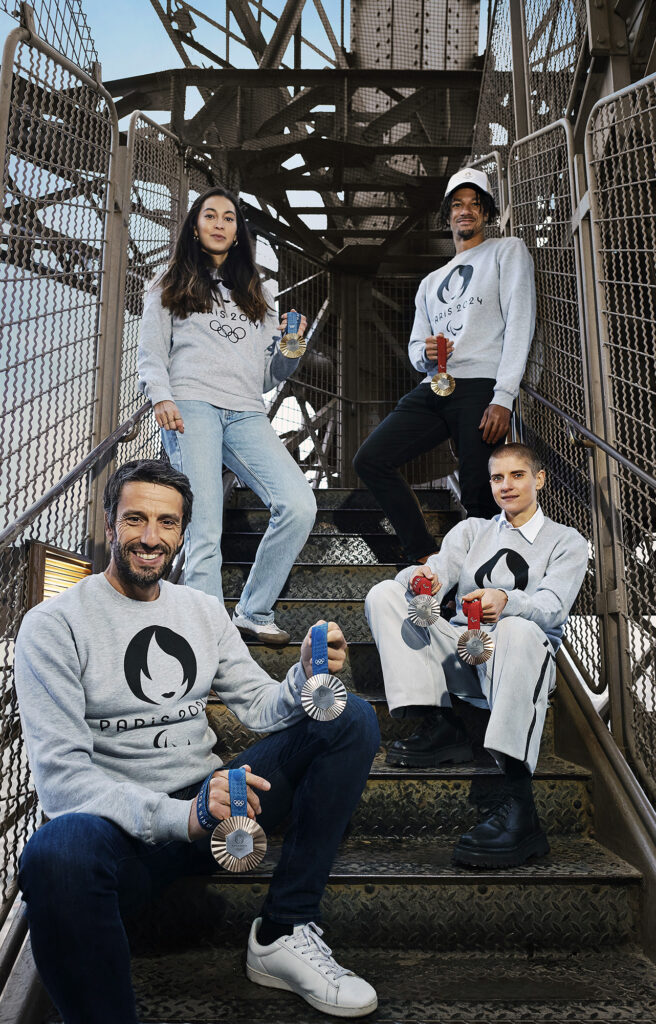
/ Tony Estanguet, President of the Paris 2024 Games Organising Committee, presents the medals made by Chaumet.
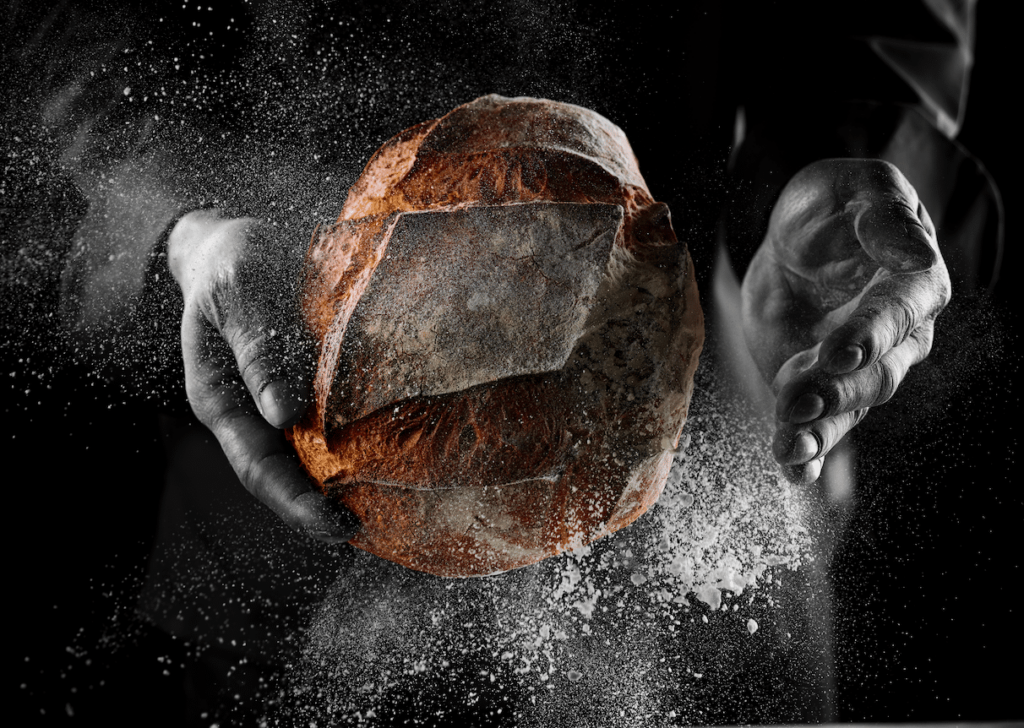
ATHLETES IN THE OVEN AND ON THE FIELD
Paris is preparing to welcome the world's largest restaurant to the Olympic Village this summer, and the traditional baguette will have its rightful place there. Stéphane Chicheri, executive chef of Sodexo Live!, has announced the installation of a bakery equipped with an oven that can be baked in situ. Athletes will be invited to get their hands dirty and bake their own bread, under the tutelage of renowned bakery chefs. And to keep this ‘so French’ art alive throughout the Games, daily workshops and original creations are scheduled.
INTERVIEW
with Dimitry Hlinka
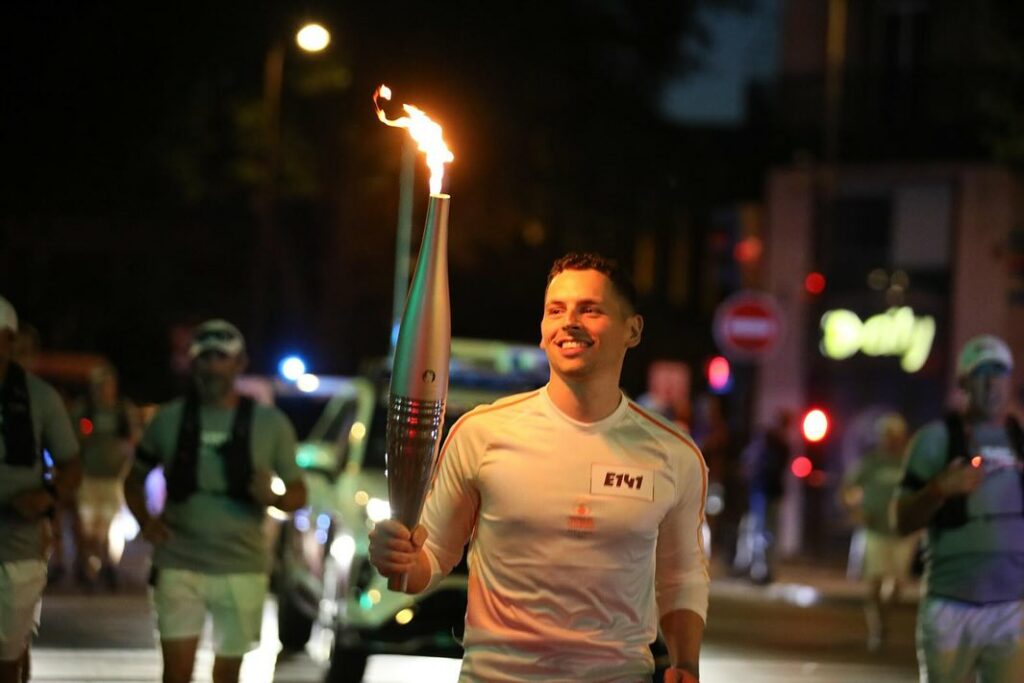
Just a few days before the opening of the Paris 2024 Olympic Games, we met one of the most promising designers of his generation. This jack-of-all-trades, a cabinet-maker by training, who likes to question the links between craftsmanship and innovation, has ventured to the Paralympics. For the occasion, Dimitry Hlinka worked with his favourite material, wood, to design a forearm prosthesis for one of our champions, a way of talking about disability in the context of this major sportive event. When the craft industry gets involved!
C.P: Hello Dimitry Hlinka, where will you be on 26 July?
D.H: I'm going to be at the opening of the Paris Olympics because a friend of mine has got a few tickets, so I'll be able to attend the ceremony.
C.P: You've got a double bill of news for the Games: the first is the presentation of your ‘Bras d'or, bras d'art’, at the exhibition ‘Terrain de jeux, la création rencontre le sport’, organised by the Bureau du Design, de la Mode et des métiers d'Art de la Ville de Paris.
D.H: I'm used to working with a wide variety of people in the craft sector. But when Arnaud (Editor’s note When Arnaud Assoumani (the multi-medal-winning Paralympic champion) contacted me about the possibility of working on a ceremonial (non-myoelectric) prosthesis for his forearm, which he would wear when speaking in schools or elsewhere to raise awareness of disability and encourage conversation on the subject, I was obviously interested. And I have to say that Arnaud gave me carte blanche to design the “object”.
C.P: What was your creative process?
D.H: I was inspired by the anatomy of the body. I didn't want this piece to borrow from the aesthetics of robotics. I wanted it to be about velocity and speed. So I started with the radius and ulna and the intersection of these 2 bones, which creates a dynamic in the shape itself and this impression of almost infinite movement. We used a matt finish on the outside and a glossy finish on the inside, which also contribute to the perception of dynamism when the prosthesis is worn, even if it's not moving.
C.P: Was this a first for you, this prosthetic exercise?
D.H: Yes, and that required me to develop an original process. Arnaud's prosthetist gave me a silicone impression of the end of his arm. We printed it in 3D so that we could sculpt the clay on top to obtain the shape of the prosthesis we wanted to create. We then scanned the whole thing and modified the 3D several times until we had the right shape.
C.P: Has this project enabled you to take a new look at disability?
D.H: Looking back, it wasn't necessarily an easy subject for me to tackle. I didn't feel particularly comfortable. There's something very intimate when Arnaud removes his prosthesis and, being very modest myself, I couldn't necessarily find the words to talk about it freely. Arnaud really helped to lighten the mood and make our discussions less dramatic.
C.P: And the aesthetics of a body that has lost some of its imaginary integrity?
D.H: As a craftsman-designer, I'm looking for both pure functionality and a form of beauty, yes. But to be honest, what I really wanted was to see the satisfaction in Arnaud's eyes. It's one of the projects I'm most proud of because it involves people in a personal and intimate way. I wanted to pay tribute to him, and make something that was true to the personality of this sportsman. This prosthesis is intended to be a source of exchange, but it is first and foremost the fruit of a dialogue, of a human encounter, between Arnaud and myself.
C.P.: In practical terms, what will be the “career” of this prosthesis?
D.H: Arnaud is very committed to changing perceptions of disability. He does a lot of television programmes. He posed for an advertising campaign wearing the prosthesis we made together, in the run-up to the Games. He also wore it for a fashion show organised by Vogue magazine. This prosthesis has a life of its own, through him and his various interventions.
C.P: Another notable contribution to the Paris 2024 Games is the fact that you carried the Olympic flame when it arrived in the capital on Sunday 14 July?
D.H: Yes, they came looking for me because I embody certain values and because the Organising Committee was obviously interested in the prosthesis project. But for me, taking part in the torch relay was another way of echoing this project with Arnaud Assoumani, with whom I would initially have liked to parade, but it wasn't technically possible. Instead, for the occasion, I created finishes in the colours of the Olympic medals, which will be visible very soon, particularly on social networks. I was given an appointment at the Hôtel de Ville at 8.30pm to walk 200 metres with the flame. It was quite an emotional moment. You have to live it to imagine it!
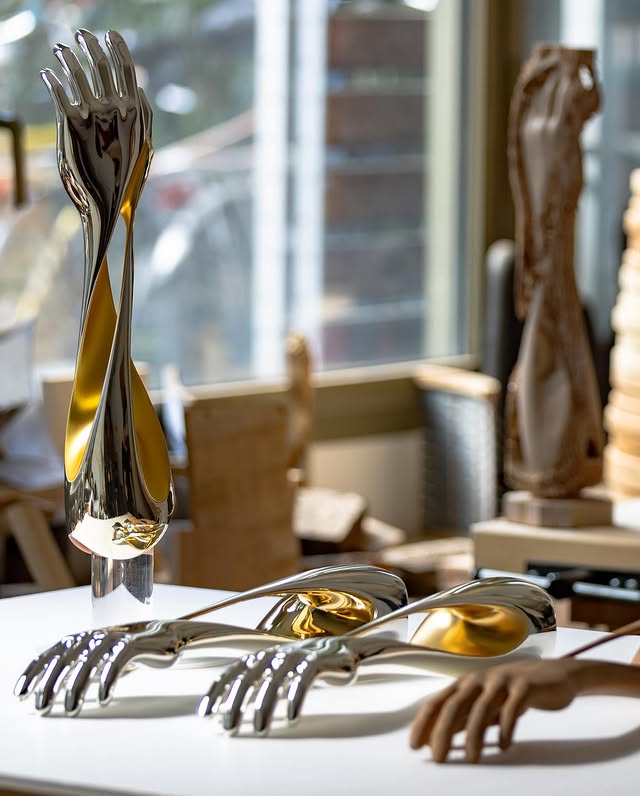
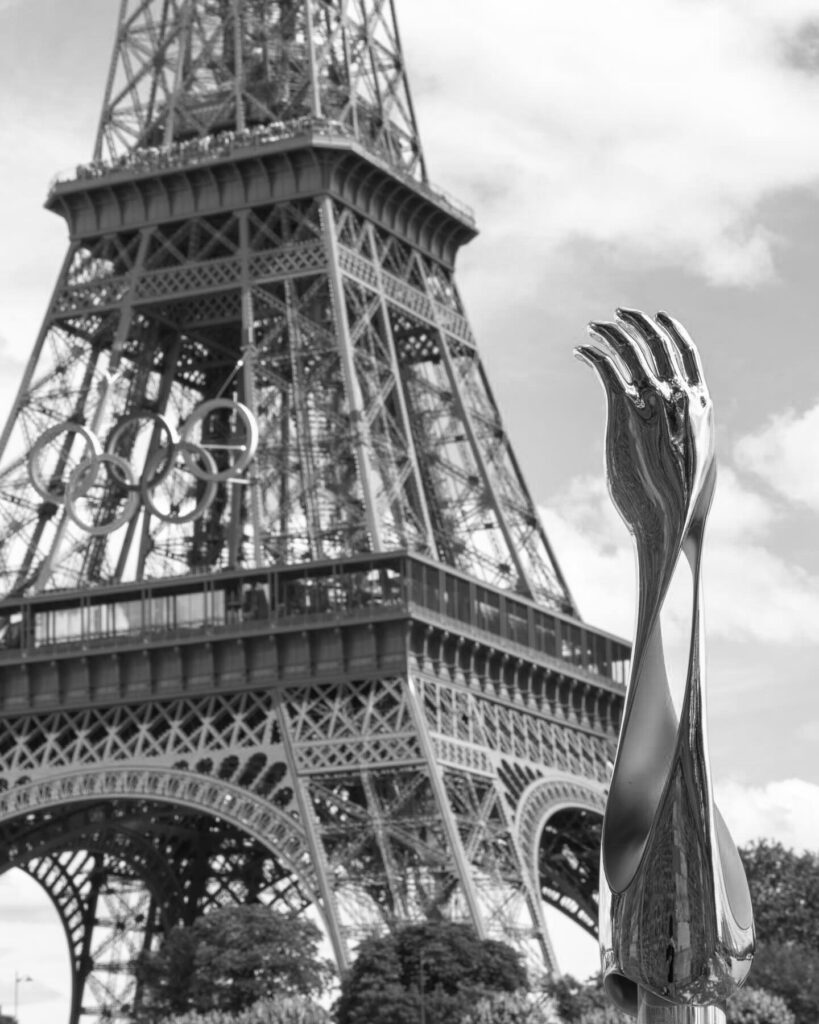
/ ‘Bras d'Or, Bras d'Art’, a forearm prosthesis for athlete Arnaud Assoumani. The 3 colours of metal on the prosthesis evoke Olympic gold, silver and bronze.
